|
|
|
|
ISSUE 28 | MARCH. 2022
|
|
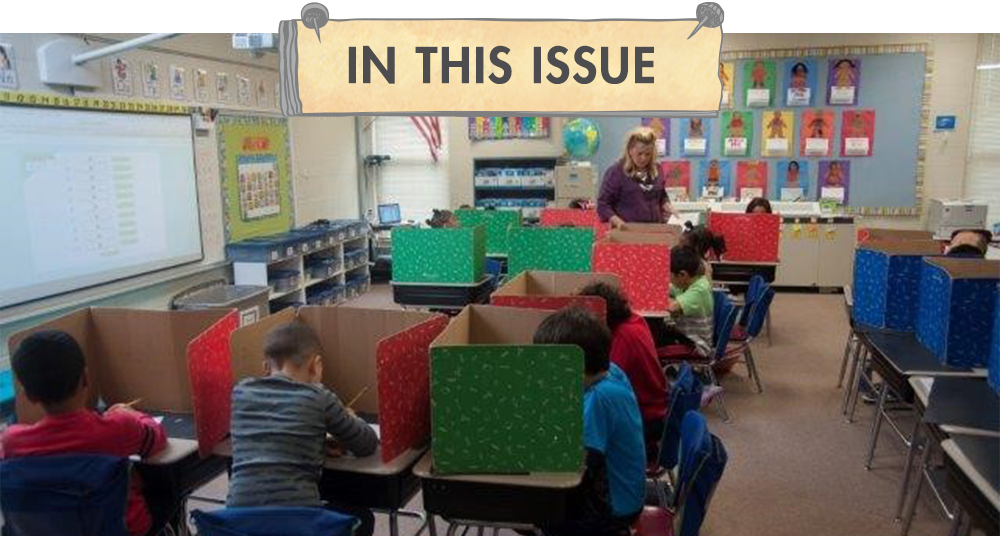
|
|
|
|
|
|
Assessments are a critical part of reading instruction, as they help teachers
make informed decisions when determining activities to support the striving
readers and challenge the advanced students. In this issue of The Superkids
Bulletin, we explore informal and formal assessment opportunities, digital
assessment reports, assessment resources, and more.
Be sure to scroll to the bottom to learn about the return of a popular Superkids
tradition!
|
|
|
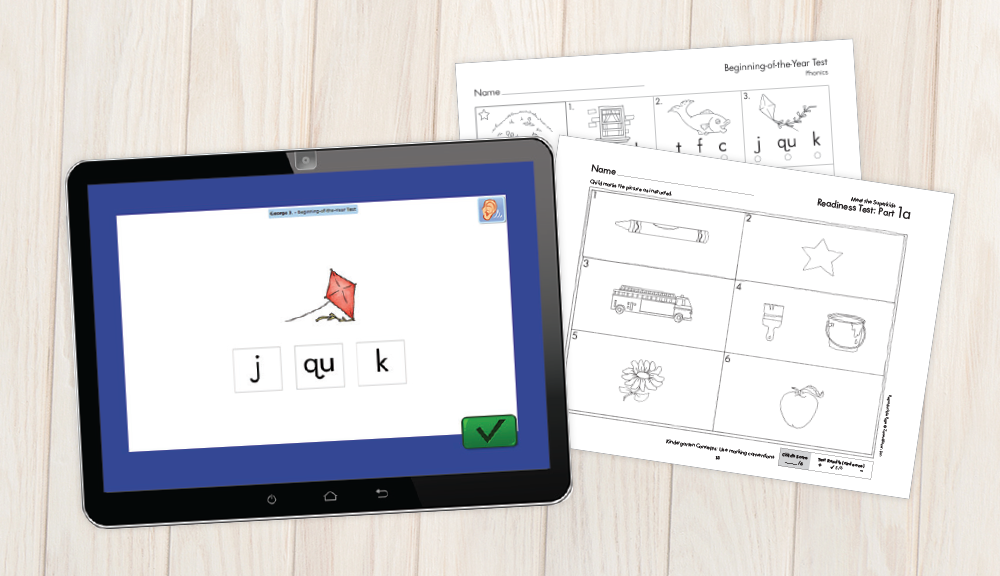
|
|
|
|
|
|
The Superkids Reading Program provides both printed and online tests for
student assessment. The Assessment Books contain the printed tests and
record forms to document class data. Online assessments are automatically
scored, and student data is available immediately.
Ongoing assessment reveals students’ progress and can inform your decisions
about reteaching skills, challenging students, and grouping students for
instruction. Assessment Books, online printable tests, interactive tests, and
other resources in the program provide ample opportunities to assess student
progress. Formal assessments available in the program include:
Readiness Test: Diagnostic assessment of emergent literacy skills, grade K
Beginning-of-the-Year Test: Diagnostic assessment of skills, grades 1–2
Progress and Midyear Tests: Periodic formative and summative assessments,
grades K–2
Benchmark Tests: Summative assessment of skill mastery, grade K
End-of-Year Test: Summative assessment of skill mastery, grades 1–2
The same assessments are available for Superkids © 2015 edition, but test names
may differ slightly.
|
|
|

|
|
|
|
|
|
If your students have taken online assessments, the reports can be very helpful
in identifying skill gaps. You can view student assessment data in the portal by selecting My Class and choosing the Reports tab. You will be taken to the Class Report page. Here are a few features you will find in the Reports section.
|
|
|
|
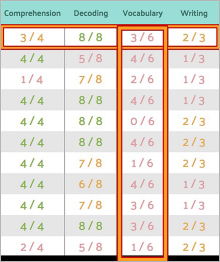
|
|
Whole-Class Data
When viewing the Class Report page,
you will see the data for the entire
class for the assessment that has been
selected. You can look horizontally to
see how an individual student
performed with all skills tested. A
vertical look at the data in one skill
column can inform you about how
your core and differentiated
instruction is working for the whole
class. If you see low scores in one skill
area for many students, be sure that
these lesson parts and reinforcement
activities are being done consistently
and thoroughly.
|
|
|
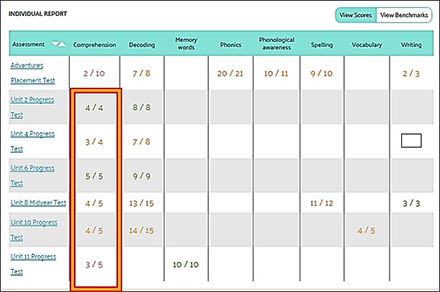
|
|
Individual Student Data
From the Class Report page, click any
student’s name to go to their Individual
Report. Here you will want to look for
patterns. For example, if a student
scores inconsistently in the
comprehension column, look at the
type of text being read during each
assessment. If the student scores well
when the text is literary but does not
perform well when the text is
informational, additional
comprehension instruction and
practice with informational text would
benefit this student.
|
|
|
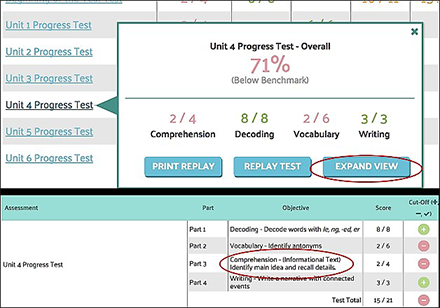
|
|
Digging a Little Deeper
Oftentimes teachers need more
information to fully evaluate how a
child performed on an assessment. To
identify the objectives tested for any
part of an assessment, click on the test
you would like to view and then click
EXPAND VIEW. A detailed list of
objectives for each test part can be
viewed.
|
|
|
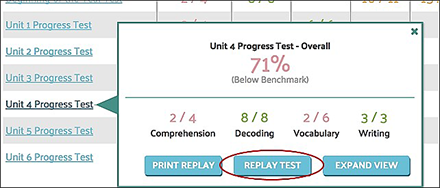
|
|
Answers, Please
Some teachers prefer giving paper-based
tests because they like to see
how the students responded. You can
do that with the Superkids online
assessments, too! To view a student’s
responses, click the test you would like
to view and then click REPLAY TEST.
|
|
|
|

|
|
|
|
|
Observing children during skill lessons, reviewing their completed work, and
listening while students orally read Superkids text are all effective ways to
informally assess individual strengths and weaknesses. Quick Assessments,
found in the Superkids Skill-Building Book, are simple one-on-one tasks that will
help you pinpoint gaps with a particular skill.
The Daily Routines are an ideal time for informal assessment of the
foundational skills taught in a unit. It may seem overwhelming to think about
informally assessing skills and documenting observations for each student
when you have a large class. Here are some tips from Superkids coaches about
gathering daily progress documentation during the Daily Routines.
|
|
|
|

|
|
Focus on a Few
It can be helpful to divide your class
into four groups and focus on
observing one group of students each
day. For example, you have a class with
24 students. On Monday, you will
observe six students and jot down any
significant strengths or weaknesses
observed. On Tuesday, you’ll observe
the next group of six students.
Continue to observe the next two
groups of six on Wednesday and
Thursday. On Friday, you can focus on
students who were absent or make a
list of children you would like to
observe again.
|
|
|
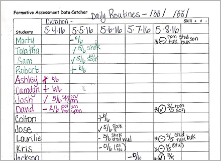
|
|
Observation Documentation
Use a weekly data catcher to record
your observations during the Daily
Routines. This handy tool will provide
information at a glance to assist with
grouping and skill focus for
differentiated instruction. Print a fresh
copy for the next week of informal
assessment.
|
|
|
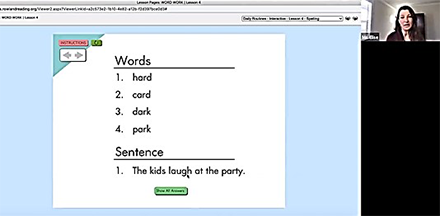
|
|
Video Assistant
The Superkids © 2017 edition video
lessons, originally created for remote
teaching, can also be used in the
classroom! Projecting a Daily Routines
video allows you the flexibility to move
around the classroom, monitor student
work, take notes as you informally
assess, and assist students who need
additional support. It’s like having
another teacher in the room!
|
|
|
|
|
|
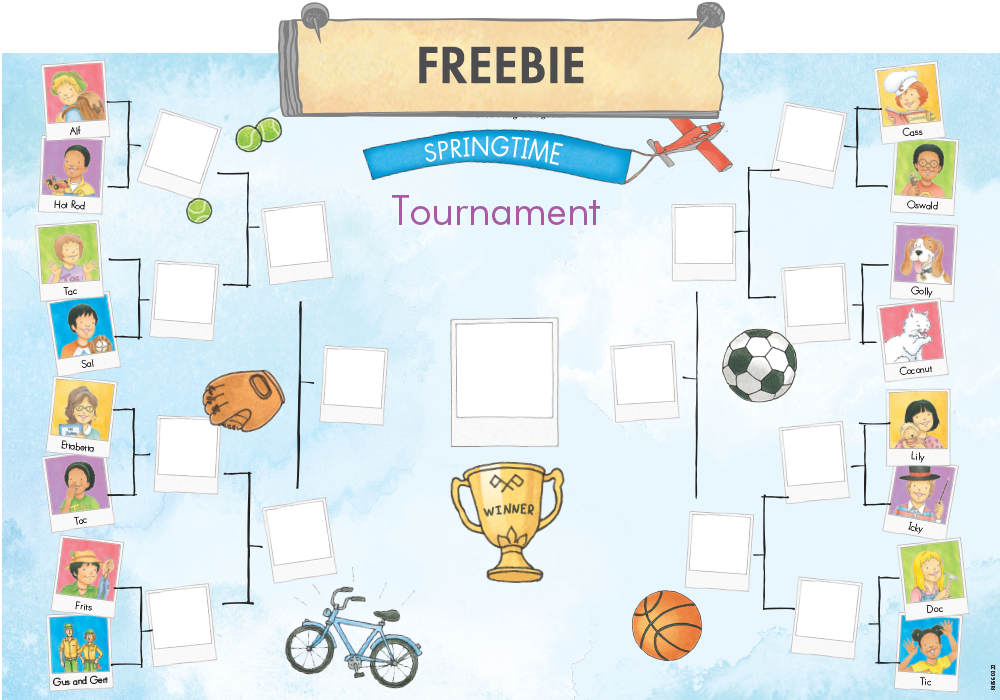
|
|
|
|
|
|
Beginning March 14, we will post a daily head-to-head poll on our Facebook page matching characters in a scenario featuring a favorite sport or
activity of the Superkids. Teachers will ask their class to vote on who they
predict would win the match and use the poll to cast their class vote. You can
use the bracket to keep track of who came out on top in the daily poll, or you
can run your own tournament with students.
|
|
|
|
|
|
|
|
|

|
|
|
|
|